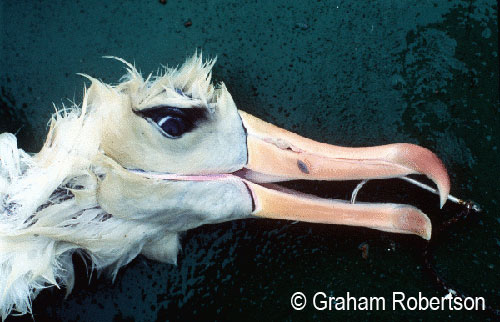Cristián Suazo (Department of Animal Ecology and Systematics, Justus Liebig University Giessen, Germany) and colleagues have reviewed the impacts of Chilean fisheries on seabirds, notably the ACAP-listed Black-browed Albatross Thalassarche melanophris, in the most recent issue of the journal Pacific Seabirds.
The paper’s abstract follows:
“Chile holds globally important colonies of endangered and endemic seabird species, and globally vulnerable nonbreeding species visit its waters. One of the major threats for seabirds in Chilean waters is the impact of fishing activities, both industrial and artisanal, which overlap with seabird breeding and foraging areas. Bycatch in fisheries threatens 27 identified species and two groups of unidentified albatrosses and penguins, with the Black-browed Albatross Thalassarche melanophrys [sic] as the species most related to bycatch events. Responding to the international call for the voluntary adoption of a plan to reduce the impacts of fisheries on seabirds, Chile generated a National Plan of Action (PAN-AM/Chile) to monitor seabird bycatch, and to mitigate threats to seabirds with emphasis on industrial longline fisheries. Following the successful reduction of seabird bycatch in the demersal longline fishery for Patagonian toothfish Dissostichus eleginoides, with zero individuals caught during 2006, Chile is extending the PAN-AM/Chile to include other fisheries that use gear known to cause incidental mortality, such as trawl, purse seine, and gillnets. This initiative is supported by actions associated with the creation of a national scientific committee for biodiversity, and new collaborative research platforms under the auspices of the Chilean Undersecretariat for Fisheries and Aquaculture.”

A hooked Black-browed Albatross that drowned, photograph by Graham Robertson
Reference:
Suazo, C.G., Cabezas, L.A., Moreno, C.A., Arata, J.A., Luna-Jorquera, G., Simeone, A., Adasme, L., Azócar, J., García, M., Yates, O. & Robertson, G. 2014. Seabird bycatch in Chile: a synthesis of its impacts, and a review of strategies to contribute to the reduction of a global phenomenon. Pacific Seabirds 41: 1-12.
John Cooper, ACAP Information Officer, 28 February 2015

 English
English  Français
Français  Español
Español